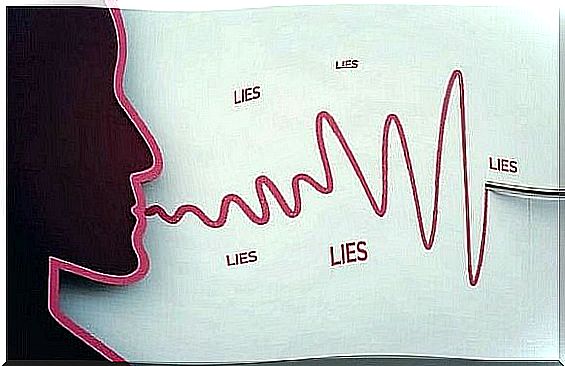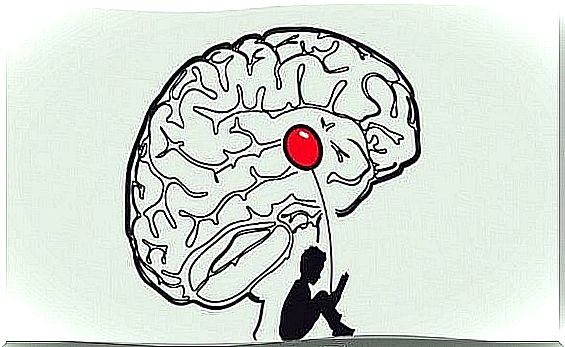A Liar’s Brain: Can We See How Much You Lie?

When someone lies over and over again, they stop reacting emotionally to their own lies. This complete lack of emotion also makes it easier for these people to continue lying in the future. In most cases where this happens, lying becomes a repeated habit. Thus, neurologists have concluded that a liar’s brain works differently. It is as if their minds are thoroughly trained for this purpose.
A basic characteristic of the human brain is plasticity. Therefore, it is not so strange to see lying as a skill on an equal footing with everyone else. And if so, that means all you have to do is practice every day, to keep your skills at the highest level. For example, there are people who are passionate about math, design, writing, etc. and their brains are shaped by this passion.
Psychology and sociology have always been interested in topics such as lies and deception. But over the last few decades, thanks to great advances in diagnostics, neuroscience is the field that has provided us with the most valuable – yet troubling – information. Why is it so worrying? If I tell you right now, that a dishonest personality is formed through consistent training and addiction, it might surprise many of you.
It starts small, you start telling little lies and then they become a habit. Then your brain is desensitized to the lies you tell. Little by little, bigger lies will no longer come with emotional pain and guilt. At this point, it has become a way of life, so to speak.

A liar’s brain
You have probably noticed that celebrities and other famous characters also lie. There are, for example, politicians out there who cling to their lies as if they were lifeboats. They defend their honesty and normalize actions that may even be criminal. Is all this just part of their job as public servants, or is it also a biological component that comes into play here?
Tali Sharot, Professor of Cognitive Neuroscience at University College London, has a say in this matter. She says that it is a biological component, but that there is also a training process involved.
Amygdala
A specific part of the brain has a very clear, direct relationship to dishonest behavior. That part is the amygdala. A liar’s brain actually goes through a very sophisticated process of self-education, and it is this education that helps a habitual liar to ignore or completely throw away all guilt.
There is a very interesting article about this in the magazine Nature Neuroscience, from 2017. They go thoroughly through this topic. The article we link to is in English so we will also provide an example as well.
Imagine a young person who has reached a position of power in the company he works for. He wants to convey leadership and trust to his employees, so he starts telling little lies. These “dissonances”, these small deceptions, activate the amygdala. This small structure of the limbic system is involved in memory and emotional reactions. It is also the part of the brain that determines how willing a person is to lie.

This will end up with the young leader wanting to resort to lies all the time. Now their job is entirely based on permanently and purposefully deceiving people. When this type of behavior becomes a habit, the amygdala stops responding. It builds a tolerance and will no longer send out any kind of emotional reaction. Emotions such as guilt and shame disappear, and you are left without remorse and without worries.
To put it another way, a liar’s brain has adapted to dishonesty.
Lies make the brain work differently
People who lie need two basic things: memory and emotional distance. This is exactly what Dan Ariely, a professor of psychology at Duke University, says in his book “The Honest Thruth About Dishonesty: How We Lie to Everyone – Especially Ourselves”, one of the most thorough insights into a liar’s brain. He also talks about many other related neurological processes that are equally fascinating.
Dr. Ariely himself performed an experiment based on this topic. The results showed that the brain of pathological liars had 14% less gray matter. But they also had between 22 and 26% more white matter in their prefrontal cortex.
What does this mean? This means that in general, a liar’s brain will form many more connections between memories, memory and their ideas. A larger network of connections means that they can access these connections faster and thus make their lies more consistent.

A liar’s brain and cognitive processes
There is consensus on how dishonesty starts from the inside. It starts with cognitive processes that get stronger the more you train them, or in other words, how often you use them. At the same time, your brain will also begin to involve fewer emotions in your actions.
Dr. Ariely finds this frightening. The fact that our amygdala can stop responding to specific or specific things means that we can also be in danger of losing some of what makes us human. When you cannot see the consequences of your actions on other people, you lose the natural goodness that should exist in every single human being.
A liar’s brain takes shape through certain, rather dark, motivations. Inside a person who has chosen to turn lies into a lifestyle, we find some specific goals: a desire for power, high status, dominance and self-interest. This is the ideology of people who at some point decide to place themselves above everyone else. There is nothing more disturbing than that.









